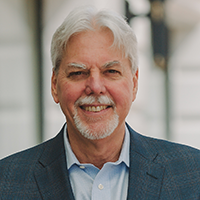
Nifty 50
The last couple of years have been pretty dreary for much of the U.S. banking industry. The Great Recession technically ended in June 2009, according to the National Bureau of Economic Research, the private research organization that keeps track of the economy’s ups and downs. Still, many commercial banks have struggled since then to grow their earnings in what continues to be a very challenging operating environment.
Lukewarm economic growth has kept many business borrowers on the sidelines and led to intense competition among lenders for what commercial credits are available. Interest rates on loans have declined precipitously, which has squeezed profit margins at many banks, while loan terms and conditions have noticeably loosened, which could have negative implications for asset quality across the industry should a weak economy slide back into a recession.
To make matters worse, the Federal Reserve Board is expected to reverse its easy money policy in 2014, which would allow interest rates to begin to rise. Banks that have relied on volatile wholesale funding to fuel their loan growth could find themselves trapped in a classic asset/liability mismatch where a significant portion of their funds reprice upward more quickly than their loans, placing even more pressure on their profitability.
One person who doesn’t lose a lot of sleep over these problems is Michael Hagedorn, vice chairman and chief financial officer at UMB Financial Corp., a $15.7-billion asset bank in Kansas City, Missouri. UMB is unique: In 2011 and 2012, the bank derived well over 50 percent of its operating revenue from a diverse set of fee-based businesses, including various payments products and services, asset servicing and investment management.
The company reported record earnings in 2012-in fact, it has posted record earnings in three of the last five years. UMB saw a 14 percent decline in earnings through the first six months of 2013 in a year-over-year comparison due to a reduction in gains on security sales, but its ratio of non-interest income to operating revenue still hit 58 percent. Investors have taken notice: In late August, UMB’s stock price hit a 52-week high of $62.20-or slightly more than twice its book value-although the share price had retreated to the mid-fifties in late September. Still, the stocks of banks that derive most of their revenue from the interest they earn from loans-and have felt the full effects of margin compression as they have been forced to compete on price-tend to trade at a discount to their book value.
For Hagedorn, UMB’s strong performance has validated a strategic decision its management team made several years ago to create a better balance between lending and fee-based services. Today, that balance means UMB doesn’t feel as much pressure as other banks to compete for loans by slashing its rates. “We want to be in a position to make all the good credits we can make,” says Hagedorn. What UMB doesn’t want to do is reach for marginal loans. “That (marginal) loan probably isn’t going to be as good” as many of the stronger loans the bank already has on its books.
“This is at the heart of our business model,” Hagedorn says. “This wasn’t happenstance. This was our intention when the current management team took over seven years ago.”
Bank Director magazine has ranked the top 50 publically traded banks based on their ratio of non-interest income to total operating revenue for 2011 and 2012. The totals for both years were then averaged, which determined the order of finish. All banks listed on the New York Stock Exchange and NASDAQ Stock Exchange were included in the analysis, which was performed by the investment banking firm Sandler O’Neill + Partners in New York.
Fee income drivers tend to fall into three general categories, beginning with a variety of consumer-based fees from such things as foreign ATM withdrawals, overdraft protection plans, debit card transactions and some checking accounts. However, regulatory initiatives like the Durbin Amendment in the Dodd-Frank Act of 2010, which lowered the amount of interchange fees that large banks can charge merchants for processing debit card transactions, and federal restrictions on bank overdraft fees that went into effect two years ago, have cut sharply into consumer-based fees at most banks.
A second category is the fee income that banks earn by originating consumer credits like home mortgages and automobile loans and then selling them to third-party organizations that turn them into investment securities. Loan fees have been an especially strong driver for banks that took advantage of a booming mortgage refinancing market by originating loans and selling them to Fannie Mae and Freddie Mac.
“Without a doubt, the single largest driver [of fee income over the two year period] was gain on sale of [mortgage] loans,” says Mark Fitzgibbon, the director of research at Sandler O’Neill. “There was a very robust refi market.”
A final category includes a broad array of fee-for-service businesses ranging from trust and private banking, investment banking and insurance brokerage, to cash management services, and debit and credit card issuance.
Although there are a handful of specialist banks represented in the ranking, most banks have elements of all three categories in their fee-income streams.
At the top of the ranking are New York-based Bank of New York Mellon Corp., State Street Corp. in Boston and Chicago-based Northern Trust Corp., which generate most of their revenue by providing investment management and transaction processing services like corporate trust and securities clearing to large institutional customers. They do very little lending, and Bank of New York Mellon-the highest ranked bank-had an average two-year fee income ratio of 79.4 percent. Between them, the three banks have a strangle hold on the investment services market in the United States and have little in common with the other institutions on the ranking beyond a banking charter.
A second group of banks cashed in on a strong mortgage refinancing market. The benefits of the refi boom were enjoyed by many of the banks and thrifts on this ranking, but perhaps none more than HomeStreet Inc. in Seattle; Flagstar Bancorp Inc. in Troy, Michigan; and Monarch Financial Holdings Inc. in Chesapeake, Virginia, which finished fourth, fifth and sixth, respectively. All three institutions earned the vast majority of their fee income from mortgage-related activities.
A third group of banks managed to approach or exceed a 50/50 balance between interest and non-interest income, but did so with a considerable amount of variety in their business models. They are not specialist banks like the first three. Nor were they highly indebted to the mortgage refi market, like the second group of institutions. Instead, they tend to be traditional commercial banks that have built highly diversified earnings platforms that generate fee income from a number of different sources, proving that there is more than one path to revenue diversification.
This trend was very evident at some of the country’s largest banks, which historically have been more diversified than smaller institutions, which tend to rely more on interest income from loans. Eleventh-ranked JPMorgan Chase & Co. in New York saw a nice bump up in mortgage-related fees from 2011 to 2012, but also generated significant fees from investment banking, credit cards and-its biggest source of fee income in 2012-asset management and administration services.
The most significant fee drivers at Charlotte, North Carolina-based Bank of America Corp., which placed 13th on the ranking, were investment and brokerage services, investment banking, consumer banking service charges and credit cards. Fee income from its mortgage origination operation-a business that Bank of America has de-emphasized in recent years-lagged behind all those other areas in 2012. Mortgage banking fees did account for 27 percent of San Francisco-based Wells Fargo & Co.’s non-interest income in 2012, but the bank actually made slightly more from its trust and investment management activities last year.
The two-year fee income average for JPMorgan, Bank of America and Wells Fargo were, respectively, 50.4 percent, 48.1 percent and 47.5 percent.
But revenue diversification isn’t a game that only large banks can play. Twelfth-ranked First Horizon National Corp. in Memphis, Tennessee, which is considerably smaller at $25 billion in assets compared to JPMorgan at $2.4 trillion, still posted an average two-year fee income ratio of 50.6 percent, thanks to a securities brokerage subsidiary and its corporate cash management business.
So far, HomeStreet, the $2.5-billion asset thrift that ranked fourth with a two-year non-interest income ratio of 73 percent, has taken full advantage of mortgage refinancing. The bank saw a huge jump in gain-on-sale revenue in 2012, thanks to a resurging housing market in the Pacific Northwest. “This company for 92 years has been an active lender to not only the construction industry, but to the home loan businesses as well,” says HomeStreet President and Chief Executive Officer Mark Mason.
In addition to its mortgage origination activity, HomeStreet maintains an $11-billion mortgage servicing portfolio, which also makes an important contribution to its fee income. Mortgage servicing rights (MSR) tend to be a volatile asset class since low or declining interest rates usually stimulate a lot of refinancing activity as borrowers replace higher cost mortgages with less expensive ones. MSR portfolios tend to decline in value as interest rates decline, and the institution that holds them has to make quarterly accounting adjustments, which can impact their reported earnings. And under the new Basel III capital rules, banks will have to hold additional capital if the value of their MSR portfolios exceeds 10 percent of their Tier 1 capital ratio, which has prompted many larger banks to sell off a portion of their MSR portfolios.
Mason says that even with the new requirement, HomeStreet remains committed to the servicing business. “We’ve always serviced the loans we originate,” he says. “Our customers expect it.” Indeed, more than 60 percent of HomeStreet’s mortgage refinancing activity comes from its existing customers.
Refinancing volume has slacked off somewhat in 2013 as mortgage interest rates have begun to rise, but Mason says that HomeStreet has been able to replace much of that production with purchase loans, which has been buoyed by a strong housing market in the Pacific Northwest. “We’ve been producing a higher percentage of purchase loans than other players in the market,” he says. “And these are still great markets.”
While HomeStreet is clearly banking on the mortgage market, for the last several years Tulsa, Oklahoma-based BOK Financial Corp., which placed 16th on the ranking with a two-year fee income ratio of 46.2 percent, has pursued a deliberate strategy of revenue diversification-not only between lending and fee income, but in its sources of fee income. The $27.4-billion asset bank generated revenue from mortgage banking, brokerage and trading activities, credit cards, deposit service charges and trust operations.
“We’ve had a long-term strategy to build the business out, which would bring us to what was once a very aspirational goal of 50/50 [non-interest income to operating revenue],” says Senior Executive Vice President Steven Bradshaw. Although the bank’s mortgage banking operation, which includes a $14-billion MSR portfolio, was its single biggest source of fee income in 2012, its other fee-based businesses all make significant contributions to the bottom line. “We’re not overly dependent on any one fee source,” Bradshaw says.
Another bank that has achieved a high degree of balance between lending and fee-based businesses is UMB, which placed ninth on the ranking with a two-year fee income ratio of 56.5 percent. The bank’s biggest source of fee income is its investment management and asset-servicing operation, although it has become a significant credit and debit card issuer for the size of the bank, and also has carved out a niche for itself in the health care market, where it is one of the country’s top five processors of health savings accounts and flexible spending accounts in the country. According to Hagedorn, this business brings in $600 million in deposits every year to the bank, while also providing it with a good source of fees.
The revenue balance that UMB has achieved will allow it to grow its earnings without necessarily having to grow its balance sheet by bulking up on loans. In today’s highly competitive lending market, this balance means that UMB doesn’t have to take on added credit risk just to grow. “Our business model is very thoughtful around safety and soundness and risk management,” Hagedorn says.
If there’s a downside to having a business model that emphasizes fee-for-service businesses, it’s that securities analysts and institutional investors don’t value some fee income drivers as much as others. Businesses that tend to be either cyclical or highly volatile, including most capital markets activities, securities brokerage and mortgage origination, are considered to be less desirable than more stable drivers like trust and investment management, asset servicing and payments.
And this is where UMB has been particularly prescient. It has constructed a fee income franchise that is relatively stable and is hard for competitors to break into, because the businesses take time and money to build.
“We hear repeatedly from sell-side analysts and large institutional investors that the value of this diversified financial services model is seen as a winner and puts a premium on the bank’s stock,” says Hagedorn. “This is the winner going forward.”
Click here to review the 50 Best Fee Income Banks
on the digital edition of Bank Director.

Join OUr Community
Bank Director’s annual Bank Services Membership Program combines Bank Director’s extensive online library of director training materials, conferences, our quarterly publication, and access to FinXTech Connect.
Become a Member
Our commitment to those leaders who believe a strong board makes a strong bank never wavers.



